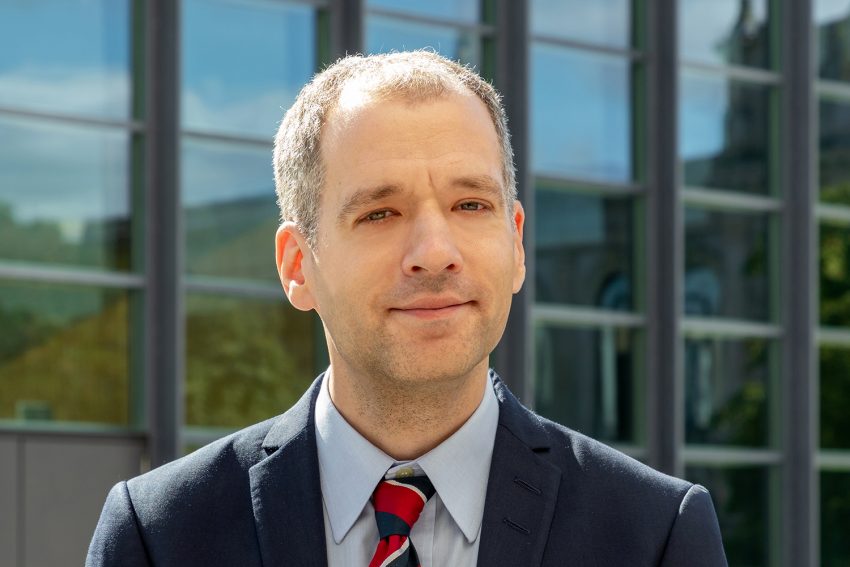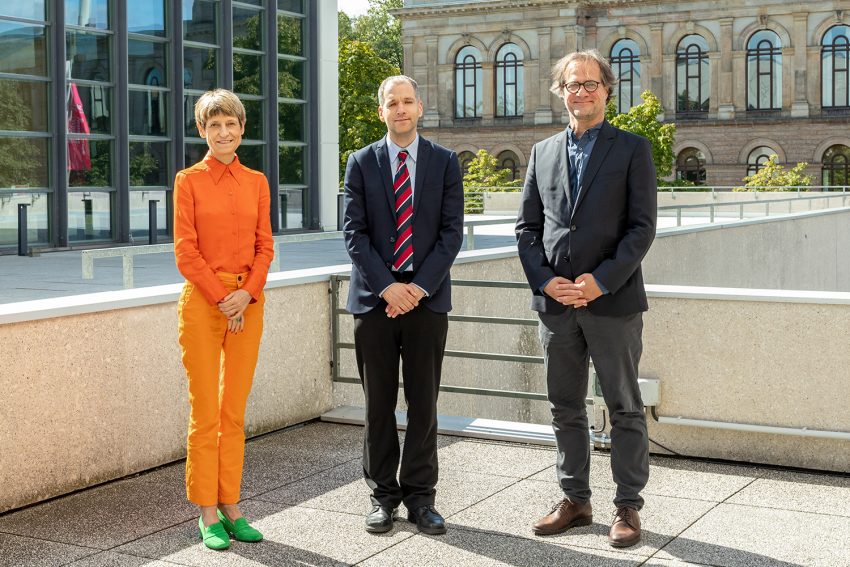Of random walks and other random events Sebastian Andres is the new professor at the Institute of Mathematical Stochastics
Random walks and other random processes in random environments – this is the focus of mathematician Sebastian Andres’ research. Andres has been a professor at the Institute of Mathematical Stochastics at Technische Universität Braunschweig since October. In an interview, he explains the purpose of such random walks and what fascinates him about probability theory, the mathematics of chance.

Sebastian Andres is the new professor at the Institute of Mathematical Stochastics. Photo credit: Kristina Rottig/TU Braunschweig
Welcome to TU Braunschweig! Why did you choose our university?
I am a mathematician working in the field of probability theory, the mathematics of chance, although my own area of research has many connections with other mathematical disciplines, such as mathematical analysis. My decision to move to Braunschweig was mainly due to the excellent working conditions and the academic environment at TU Braunschweig, which offers me many exciting opportunities for collaboration, both within probability theory and beyond. Last but not least, accepting the professorship here gave me the opportunity to return to Germany after seven years in the UK.
What exactly do you do in your research? How would you explain your work to someone unfamiliar with the subject?
I study random walks and other random processes in random environments. For example, imagine a grid of nodes and edges, where you randomly assign a weight to each edge. Then consider a particle that randomly bounces around the nodes, randomly choosing one of the neighbouring nodes for its next position with a probability proportional to the weight on the corresponding edge.
Among other things, such random walks serve as a model to describe transport processes through a medium. Consider, for example, the thermal conductivity in porous media or in composite materials, or the electrical conductivity of metals with impurities. Such media are typically heterogeneous on a microscopic scale, i.e. they are composed of different materials. These microscopic structures of such heterogeneous media can often only be described statistically, which is why they can be modelled as a random environment. If one considers such anomalies on very large, i.e. macroscopic, scales of space and time, one typically finds that the microscopic inhomogeneities are averaged out and a homogenisation effect occurs, so that the effective macroscopic behaviour can be described by a much simpler process in a homogeneous environment. One of the things I am investigating in my research is when these homogenisation effects occur.

Professor Sebastian Andres after his appointment with TU President Angela Ittel and Professor Dirk Konietzka, Dean of the Carl Friedrich Gauß Faculty. Photo credit: Kristina Rottig/TU Braunschweig
What are the main research areas and projects you will be working on at TU Braunschweig?
So far, such random walks and homogenisation problems have mainly been studied on fixed grids. One of my research topics in the next few years will be to study homogenisation problems on other – especially random – geometric structures, which are also being researched by colleagues from another working group at the Institute of Mathematical Stochastics. Of course, I hope to be able to draw on their expertise.
Random walks in random environments also occur, somewhat surprisingly, in some models of statistical mechanics, a branch of mathematical physics. Because of these relationships, it is sometimes possible to use such homogenisation results to derive statements about these physical models. I think I will be able to make further contributions in this area in the coming years. The strong scientific profile of TU Braunschweig will be helpful. I also hope to be able to contribute my experience in the field of doctoral training, especially in the coordination of graduate programmes, at TU Braunschweig.
What motivated you to do research in this area?
Random walks in random environments have been a very active area of research in probability theory since the 1970s. I myself only started working on it after completing my PhD in 2009, and as part of my first postdoctoral position at the University of British Columbia in Vancouver, I was given the opportunity to work with leading experts on a project in this area. Personally, I find the topic exciting, firstly because it is rich in fascinating mathematical phenomena, and secondly because there are close connections to various subfields of mathematics.
Describe your working day in three key words?
A lot of variety and change: Overall, my working day is very varied. During term time, I tend to focus on organising and coordinating courses and administrative tasks. During the semester breaks, however, I often spend a lot of time travelling both nationally and internationally, for example to attend conferences or to conduct research at other universities in order to exchange ideas with colleagues and to advance research projects with cooperation partners. In the summer of 2022, for example, I spent three months in Kyoto as a visiting professor.
Communication: When they think of a mathematician, many people spontaneously imagine someone pondering mathematical problems in solitude. Of course that is part of the job, but it is a comparatively small part of my day-to-day work, which is very much characterised by communication, be it in the form of teaching in lectures, supervising students or PhD students, or disseminating research results through professional talks. An essential part of mathematical research, and one in which decisive progress is often made, is the direct exchange of ideas and discussions with my collaborators.
Patience, perseverance and persistence pay off! Mathematical research often requires a great deal of patience. There are often periods without directly measurable progress, and a certain amount of trial and error is involved, with many attempts not leading to success and sometimes failing due to very small details. This can be frustrating at times. Most of my projects drag on for several years. But it pays off, especially in those moments when you achieve a breakthrough or see the finished result in front of you at the end.
